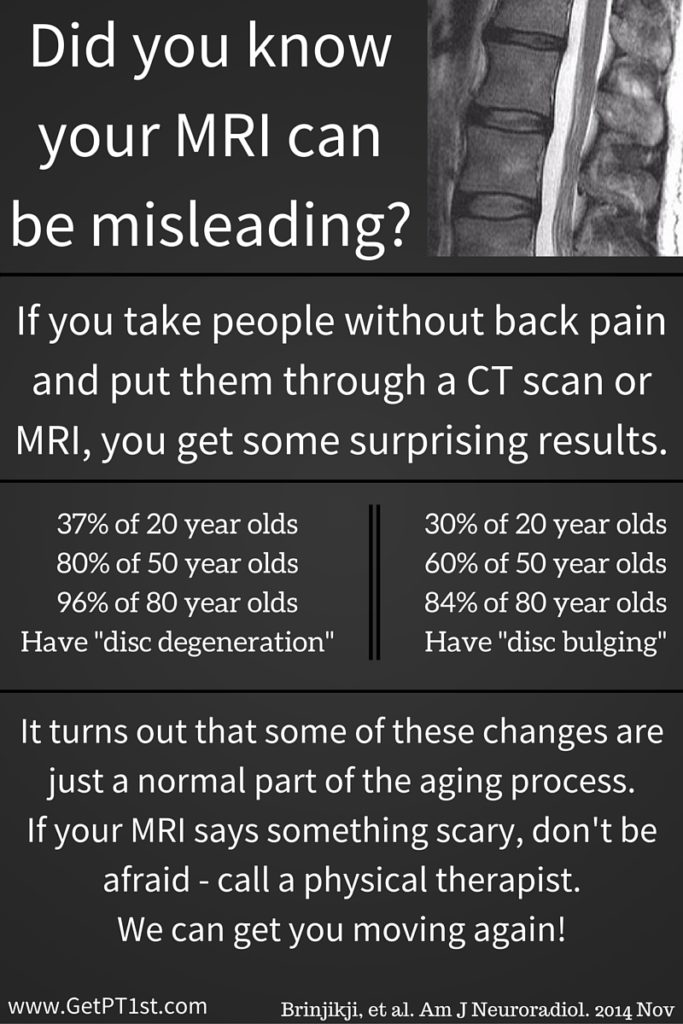What causes low back pain?
Common causes of lower back pain include:
degradation of joint surfaces (facet joint/other osteoarthritis)
squeezing of the disc out between the vertebra (disc herniation)
slipping of the vertebra forward or backward (anterolisthesis or retrolisthesis)
inflammation, misalignment, or other ligament disruption at the location where the sacrum meets the pelvis (SI joint pain)
pinching of the main spinal cord within the spine (myelopathy)
pinching of the nerves as they exit the spine (radiculopathy)
pinching of the nerves as the travel close to or through the muscle (ie piriformis syndrome)
misalignment of the spine that puts too much stress on certain structures (scoliosis, facet dysfunction)
other medical conditions can also cause back pain such as: infection, cancer, constipation and chronic stress
The determination of what is causing back pain is extremely important in successfully treating it.
How can a physical therapist help?
Physical therapists listen to your specific history of back pain, your other health conditions that may contribute, description and location of the pain, visual movement analysis, palpation and specialized tests to determine if your pain is most coming from a joint, muscle, nerve, ligament, bone, disc.
Depending on what is going on with your particular case, we use the appropriate exercise regimen and specialized manual methods to address the root of your back pain.

QUICK FACTS
-
Back pain is the leading cause of disability worldwide.1
-
4 out of 5 people will have back pain during their lives.2
-
Most back pain is mechanical in nature which means most cases are, for example, not due to inflammatory arthritis, infection, fracture or cancer.3

SOURCES
1. Hoy D, March L, Brooks P, et al The global burden of low back pain: estimates from the Global Burden of Disease 2010 study Annals of the Rheumatic Diseases Published Online First: 24 March 2014. doi: 10.1136/annrheumdis-2013-204428.
2. Rubin Dl. Epidemiology and Risk Factors for Spine Pain. Neurol Clin. 2007; May;25(2):353-71.
3. Hartvigsen J et al. Low Back Pain Series: What Low Back Pain Is and Why We Need to Pay Attention. Lancet, June 2018; Volume 391, Issue 10137; p2356-2367.
4. Delitto A, Piva SR, Moore CG, et al. Surgery versus nonsurgical treatment of lumbar spinal stenosis: a randomized trial. Ann Intern Med. 2015;162(7):465–473. doi:10.7326/M14-1420
5. Shipton EA. Physical Therapy Approahes in the Treatment of Low Back Pain Ther. 2018:7(2)127-137. doi:10/1007/s40122-018-0105-x
6. Qaseem A, Wilt TJ, McLean RM, et al, for the Clinical Guidelines Committee of the American College of Physicians. Noninvasive Treatments for Acute, Subacute, and Chronic Low Back Pain: A Clinical Practice Guideline From the American College of Physicians. Ann Intern Med. 2017;166:514–530. [Epub ahead of print 14 February 2017]. doi: 10.7326/M16-2367
